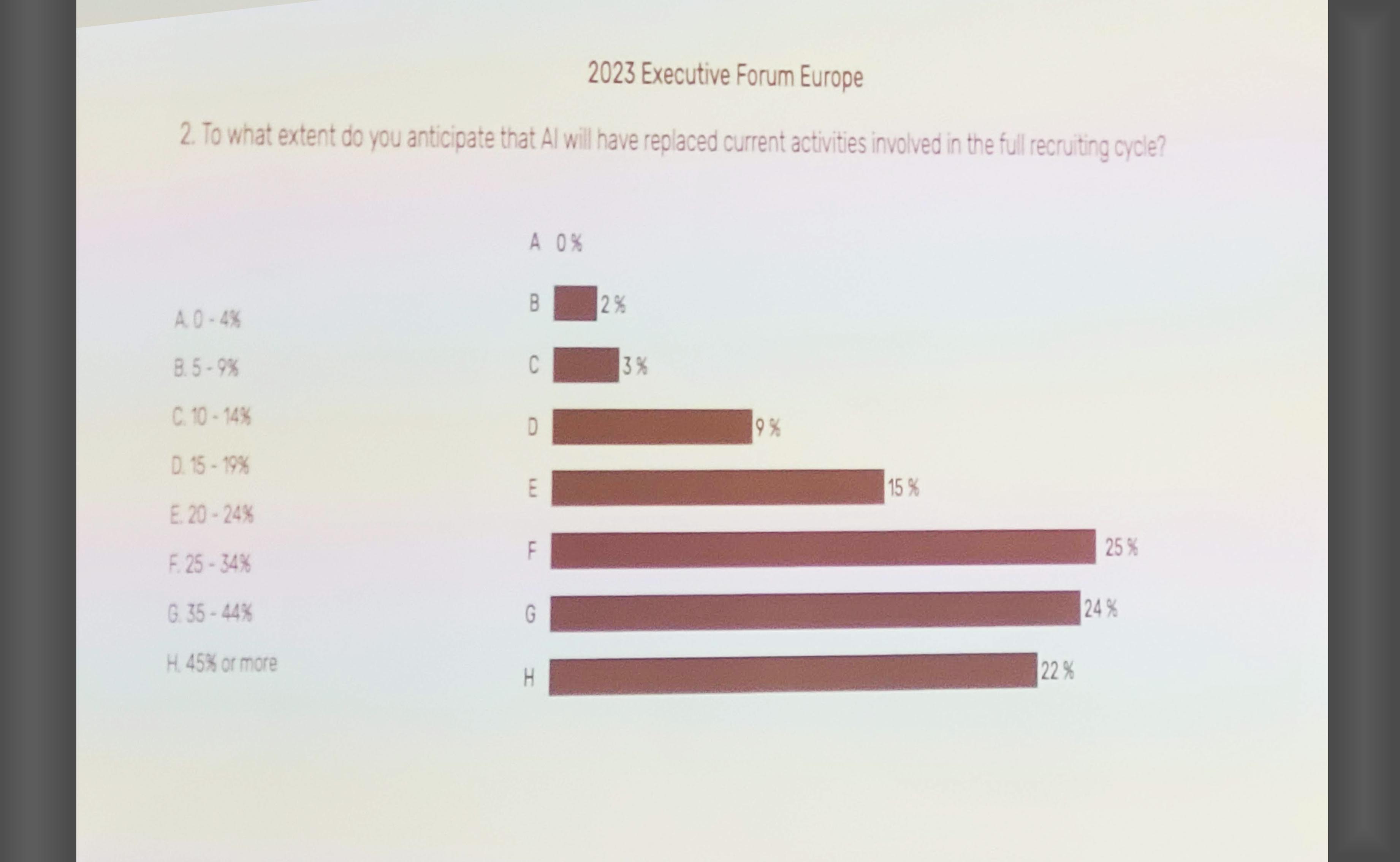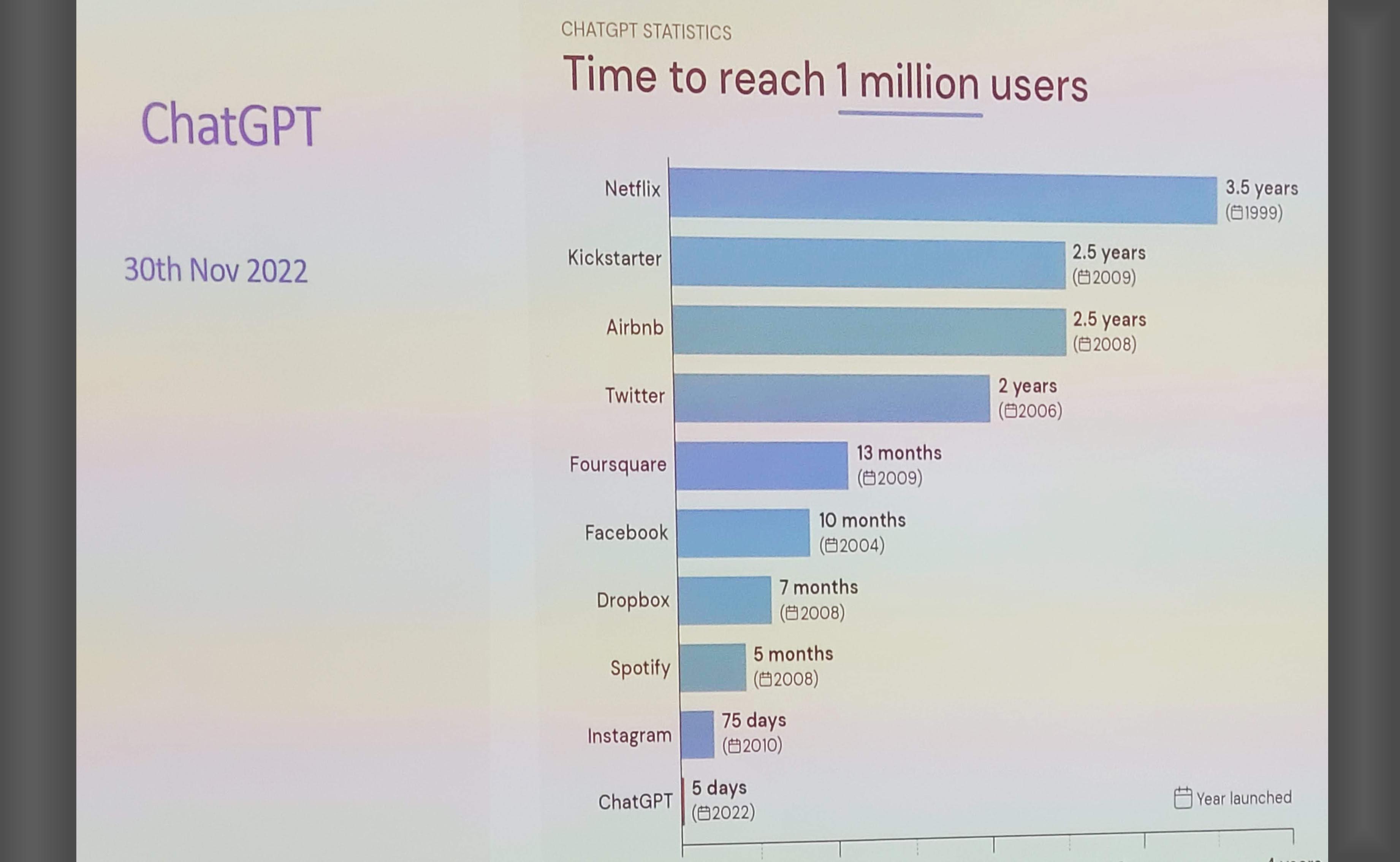I thoroughly enjoyed attending the Staffing Industry Analysts (SIA) Executive Forum – Europe at the Landmark Hotel in London along with many executives and experts from the staffing and recruitment sector in Europe and the UK.
There was one topic you could not avoid – AI – and specifically “large language model generative AI” that has exploded upon the world over the last 12 months, led of course by Open AI’s ChatGPT. This was the ubiquitous theme touching almost every presentation from John Nurthen’s opening keynote on day 1 to the Economic Insights for 2024 panel session at the end of day 2.
Some of the most enjoyable early sessions were the roundtable discussions on day one where a random mix of attendees engaged on a particular topic for a 30 min exchange of ideas and experiences. One roundtable I joined was discussing real-life AI use cases that people may be considering, or even trialing as part of their adoption of AI within their own company. The ideas came thick and fast and I managed to jot down the following suggestions:
- Job description generation and offer email generation.
- Search and identification of possible candidates based on specific criteria.
- Template contract generation based on role type, seniority etc.
- Better analysis of existing candidate profiles to match against new roles. A general feeling that the existing database is under utilised and is the ‘gold dust’ of the business.
- Analysis of successful candidates by job type/role by job board – which are the Job Boards that perform best for certain roles/sectors.
- Analysis of a candidate’s self-ranked “last X jobs” against future roles (“please classify your last X jobs – suitability and enjoyability criteria)
- Automate the “emotionally draining” tasks of a recruiter – specifically advising of job rejection – although the feeling was it could be difficult for AI to be suitably personal, empathetic and encouraging.
- Translation and summary of interview recordings to then create summaries and possibly records in the ATS.
- Possible career path trajectory and suggested changes to achieve desired outcomes based on candidate details and comparison with similar roles and history.
- Interview scheduling – particularly for mass-hiring programs.
- Talent support bots – such as “where am I going today and how do I get there?”.
- Interview panel selection – based on the candidate pool to be interviewed select the best interviewer panel to address DE&I
- Contract extension – bot driven process to extend a candidate under contract.
What became obvious was how few companies had actually launched themselves into systemically threading AI into everyday work packages. There were many great ideas, but the confidence to deploy at an enterprise level in a real-world setting seemed to be lacking, compounded by a low penetration of market ready AI-assisted functionality into the currently utilised systems.
There was general acknowledgment that individuals in companies were using the likes of Chat GPT to assist themselves, personally, by crafting AI prompts and cutting and pasting manually between systems. However, I met no-one that had deployed use cases into production processes despite this acknowledgment of the very genuine benefits generative AI models can bring to efficiency.
There were a number of reasons voiced for this throughout the conference and for me, they fell into two camps, confidence and control.
During various sessions, I noted some compelling statements by presenters that rang true for me:
- Nicholas Thompson – “IA before AI” meaning Information Architecture before Artificial Intelligence – this makes so much sense – get your data model right before embracing AI based outcomes. A house needs strong foundations.
- Bettina Schaller – “data is digital gold, capture it, organize it, protect it” – another pearl of wisdom.
- Coram Williams – “what do forthcoming European AI regulations mean for the sector?” – coincidentally this matter made the headlines the following week. There are a number of legislative responses to AI due to be released in both the US and Europe in the near future and organisations are waiting to see how these may, or may not, affect their models and usage.
As in all good bell curves, there was at least one radical outlier. In the “AI and More: The Hype and the Hope of New Technology” session Lievan Van Nieuwenhuyze took us through how his adoption of AI across the business was driving efficiency and cost saving for the House of HR in customer engagement, candidate placement, legal assessment and even candidate loyalty. He dropped another powerful statement – “train your people” – don’t leave them to work out how to harness generative AI on their own, build and execute a training plan that wholistically raises the water level of capability on the approved AI tools across the business.
“AI won’t take your job but someone who uses AI probably will”.

So, how do we get there?
There is no denying that generative AI is destined to shake up the sector, a survey statistic from Tijs van Tilburg claimed “73% of staffing leaders will use AI to automate repetitive tasks to enhance efficiency”.
Ursula Williams’s audience poll during “Building the staffing firm of the future” highlighted the expectation of transformative change with over 70% of the respondents predicting 25% or more of current activities will be replaced by AI;
In some circles there was an element of fear emerging – what will AI do to our own jobs? What happens to our company if our competitors work out how to harness this thing better and faster than we do? I think the approach must be to accept AI is coming and you need to be a part of the revolution. I think there is no truer phrase than “AI won’t take your job but someone who uses AI probably will”. And Nina Schick showed that Chat GPT has exhibited the fastest uptake of new technology ever, beating all those now so familiar systems that have come before it. This is a revolution in capability, akin to the growth curve in computing power or the uptake of streaming services.
So how do we get there? How do we overcome our fear, uncertainty, and doubt? The first thing I suggest is to be clear about your technology strategy. Do you have a platform that will support you now and into the future with confidence?
Many of us have encountered the ‘buy or build’ conundrum and the incorporation of AI into systems is no different to any other functionality, but it is oh so much more complex! There are many organisations offering AI capability in a growing market but few true experts. You need to be selective as to who has the knowledge to provide effective models, while also considering if you have the in-house capability to thread these into your processes, supporting them on an ongoing basis. I feel that utilising systems from providers with strong and recognised AI capabilities within the organisation is the path to success.
Will that platform honor the fact that your data is yours and it should not leak into the open market nor be used to train generic AI models beyond your corporate walls? Are you confident that as you thread AI into your processes the appropriate security trimming will be applied?

Microsoft has embraced enterprise AI throughout their platform and is indisputably one of the market leaders in AI research. They have also taken the right steps towards making this capability deliverable and secure at both enterprise and end-user level. They are delivering proactive and reactive AI throughout the Dynamics 365 platform while keeping your data yours, and controlling what your people can see and access with their current security profiles. Microsoft Copilot is natively threading AI based augmented assistance capabilities across the Dynamics 365 platform, whilst keeping true to the “human in the loop” principle, keeping the user in control
Forward-looking staffing agencies need scalable and robust management systems that facilitate their strategy. 1Staff is an end-to-end staffing solution underpinned by Microsoft Dynamics and Azure cloud platforms. From business planning to budget tracking, marketing and lead generation through customer engagement, applicant tracking through compliance and onboarding, time bill & pay through to full ERP financials, with 360-degree visibility from dashboards to governed reports, 1Staff does the job.
Want to find out more about our 1Staff Staffing Software
Are you looking for an all-in-one solution for your staffing and recruiting company?